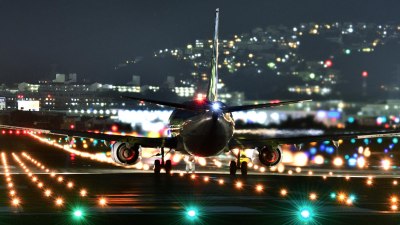How to Travel Light and Self-Sufficient on a Remote Journey
Discover essential tips for traveling light and being self-sufficient on your next remote adventure.

Traveling to remote destinations can be an exhilarating experience, offering the chance to disconnect from the hustle and bustle of daily life and immerse oneself in nature. However, it also comes with its own set of challenges, particularly when it comes to packing and ensuring you are self-sufficient throughout your journey. Mastering the art of traveling light while remaining self-sufficient allows for greater mobility, flexibility, and enjoyment of your adventures. Here’s a comprehensive guide on how to achieve this.
Understanding the Concept of Traveling Light
Traveling light means being mindful of what you pack and maximizing the efficiency of your luggage. This is particularly important when traveling to remote locations where you might have to move often, walk long distances, or navigate rough terrains. The goal is to minimize weight while ensuring you have all the essentials needed for your journey. Every item in your pack should have a purpose.
Choosing the Right Gear
The foundation of traveling light starts with your gear. Selecting lightweight, multi-functional, and durable items is crucial. When choosing a backpack, opt for a lightweight option that has good support and ample storage. Look for backpacks made of ripstop nylon, which is lightweight yet strong. A pack sized between 40 to 60 liters is usually ideal for remote travels.
Clothing is another significant consideration. Choose clothing made from moisture-wicking, quick-drying fabrics that can be layered. This allows you to adjust to varying weather conditions without needing to pack multiple outfits. A general rule of thumb is to bring four basic clothing layers: a moisture-wicking base layer, an insulating layer like a fleece or down jacket, a waterproof shell, and durable pants.
Prioritize Multi-Functional Items
Invest in multi-functional items that can serve several purposes. For example, a pair of versatile shoes can double as hiking boots and casual footwear. A lightweight, foldable water bottle is essential for hydration and can also be used for cooking or cleaning. Consider items like a camping towel that absorbs water yet dries quickly, or a portable charger that can charge multiple devices, reducing the need for multiple chargers.
Food and Cooking Essentials
Food can take up a lot of space and weight in your pack, so planning your meals is essential. Consider lightweight, non-perishable food items like dehydrated meals, nuts, and energy bars. You can also include meals that can be easily cooked, such as rice or pasta, which only require water and a heat source. A compact camp stove is another essential gear item for cooking while on the road.
When cooking in the wild, always consider safety and environmental impact. Use a stove that has efficient fuel consumption, and remember to gather any trash or leftovers and dispose of them properly. A well-planned cooking setup can save space and energy.
Water Sources and Purification
On a remote journey, securing a reliable water source is crucial. Research your destination to identify natural water sources such as rivers, lakes, or streams. Always carry a portable water purification system, whether it’s a filter, UV purifier, or purification tablets. This ensures the water is safe to drink and reduces the need to carry large quantities of water, thereby keeping your pack lighter.
Navigating Challenges Without Overpacking
When traveling in remote areas, you may encounter unexpected challenges, including adverse weather or difficult terrain. While it may be tempting to overpack for every contingency, the key is to plan for the most likely scenarios. Carry a lightweight first-aid kit that includes essential supplies like band-aids, antiseptics, and any personal medications. You can find compact first-aid kits that fit easily into your backpack.
Staying Connected and Safe
While you may be venturing into the wilderness, safety should always be a top priority. Consider bringing a lightweight emergency satellite communicator or personal locator beacon (PLB) that can be easily carried in your pack. These devices allow you to send distress signals and communicate your location to emergency services if necessary. Additionally, carrying a map and compass ensures you can navigate accurately, even when technology fails.
Mindful Packing Strategy
Adopt a mindful approach to packing. Start by creating a list of everything you think you might need and then review it critically. Ask yourself if items are truly necessary and if they can serve more than one purpose. Aim to pack as minimally as possible, fitting everything into your chosen backpack with a focus on weight distribution and accessibility.
Embracing Minimalism
Traveling light is not merely about physical packing; it's also a mindset. Embrace minimalism in your approach to travel. Resist the temptation to bring along non-essential luxuries. Instead, focus on experiences, connections, and appreciating the natural environment around you. The psychological benefits of minimalism can significantly enhance your journey, allowing you to enjoy it without the burden of excess baggage.
Documenting Your Journey
It's essential to record your adventures, but you can do this without extra equipment. Instead of a heavy camera, consider using your smartphone to capture moments. Most modern smartphones have high-quality cameras and can easily store photos and videos without taking up much space. Alternatively, a lightweight portable journal or a sketchbook can serve as a creative outlet to document your travels.
Building a Flexible Itinerary
When traveling to remote locations, having a rigid itinerary can be counterproductive. Embrace flexibility in your plans, allowing for spontaneous discoveries or detours that can lead to unexpected adventures. Having a lightweight, compact travel guide app on your smartphone can provide valuable information about the local area without the burden of carrying physical books.
Traveling light and self-sufficiently on a remote journey involves careful planning and strategic packing. By selecting versatile, multi-functional gear, prioritizing essential food and water sources, and adopting a minimalist mindset, you can enjoy a fulfilling and enriching experience without the excess weight. Remember, the essence of remote travel lies in the experiences you create and the memories you build, not in the gear you carry. Happy travels!











